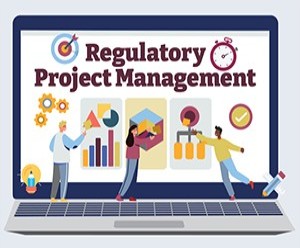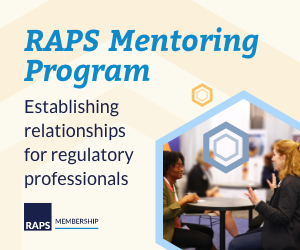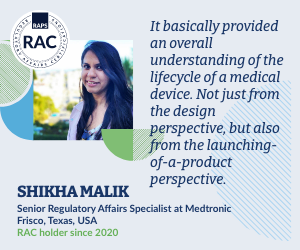Industry Comments on ICH Product Lifecycle Management Guideline
![]() Regulatory News | 21 January 2019 |
Regulatory News | 21 January 2019 |
The European Medicines Agency (EMA) on Friday released comments gathered during its public consultation for the International Council for Harmonisation's (ICH) draft guideline on pharmaceutical product lifecycle management.
The 31-page draft guideline, ICH Q12: Technical and Regulatory Considerations for Pharmaceutical Product Lifecycle Management, was adopted by ICH and released for public consultation last year.
Most of the comments EMA received express concern that two of the central aspects of the guideline, established conditions (ECs) and product lifecycle management (PLCM) documents, are incompatible with the legal frameworks of certain ICH regions.
According to the draft guideline, ECs provide "a clear understanding between the [marketing authorization holder] and the regulatory authorities regarding the necessary elements to assure product quality and identify the elements that require a regulatory submission, if changed."
The PLCM documents on the other hand are meant to serve as a repository for ECs and changes made to ECs over time and capture "how a product will be managed during the commercial phase of the lifecycle including relevant post-approval [chemistry, manufacturing and controls] CMC commitments and [postapproval change management protocols] PACMPs."
While the draft guideline notes the potential legal holdups, it puts off addressing them until a legal review can be conducted. "These concepts will, however, be considered when the legal frameworks will be reviewed and, in the interim, to the extent possible under the existing regulation in these ICH regions," ICH writes.
A group of EU-based trade associations, including the European Federation of Pharmaceutical Industries and Associations (EFPIA), the European Biopharmaceutical Enterprises (EBE), Vaccines Europe and Medicines for Europe, warn that the guideline as written runs a "real risk of divergence across countries/regions" in how ECs and PACMPs are handled that could lead to a greater regulatory burden for industry.
"Both the established conditions (ECs) and product lifecycle management are the core of the Q12 guideline. Incompatibility of these concepts with the established legal framework is a matter of concern," writes life science consulting firm Kinapse.
In its comments, drugmaker Janssen Pharmaceuticals warns that finalizing the ICH Q12 guideline before there is a harmonized approach to ECs could "trigger confusion" between regulators and industry. Janssen also asks for clarification on whether the guideline will apply to existing marketing applications and requests that regulators set clear compliance dates for updating those applications.
CLS Behring similarly calls for the guideline to "better clarify the expectations for 'legacy products' … to overcome the uncertainty that was raised with ICH Q8-Q11."
To add to the regional discrepancies for managing postapproval changes for drugs, last month drugmakers also took issue with the US Food and Drug Administration's (FDA) draft guidance on the subject, noting that FDA's guidance does not incorporate concepts from the ICH Q12 guideline meant to simplify the postapproval change process.
EMA, Comments
The 31-page draft guideline, ICH Q12: Technical and Regulatory Considerations for Pharmaceutical Product Lifecycle Management, was adopted by ICH and released for public consultation last year.
Most of the comments EMA received express concern that two of the central aspects of the guideline, established conditions (ECs) and product lifecycle management (PLCM) documents, are incompatible with the legal frameworks of certain ICH regions.
According to the draft guideline, ECs provide "a clear understanding between the [marketing authorization holder] and the regulatory authorities regarding the necessary elements to assure product quality and identify the elements that require a regulatory submission, if changed."
The PLCM documents on the other hand are meant to serve as a repository for ECs and changes made to ECs over time and capture "how a product will be managed during the commercial phase of the lifecycle including relevant post-approval [chemistry, manufacturing and controls] CMC commitments and [postapproval change management protocols] PACMPs."
While the draft guideline notes the potential legal holdups, it puts off addressing them until a legal review can be conducted. "These concepts will, however, be considered when the legal frameworks will be reviewed and, in the interim, to the extent possible under the existing regulation in these ICH regions," ICH writes.
A group of EU-based trade associations, including the European Federation of Pharmaceutical Industries and Associations (EFPIA), the European Biopharmaceutical Enterprises (EBE), Vaccines Europe and Medicines for Europe, warn that the guideline as written runs a "real risk of divergence across countries/regions" in how ECs and PACMPs are handled that could lead to a greater regulatory burden for industry.
"Both the established conditions (ECs) and product lifecycle management are the core of the Q12 guideline. Incompatibility of these concepts with the established legal framework is a matter of concern," writes life science consulting firm Kinapse.
In its comments, drugmaker Janssen Pharmaceuticals warns that finalizing the ICH Q12 guideline before there is a harmonized approach to ECs could "trigger confusion" between regulators and industry. Janssen also asks for clarification on whether the guideline will apply to existing marketing applications and requests that regulators set clear compliance dates for updating those applications.
CLS Behring similarly calls for the guideline to "better clarify the expectations for 'legacy products' … to overcome the uncertainty that was raised with ICH Q8-Q11."
To add to the regional discrepancies for managing postapproval changes for drugs, last month drugmakers also took issue with the US Food and Drug Administration's (FDA) draft guidance on the subject, noting that FDA's guidance does not incorporate concepts from the ICH Q12 guideline meant to simplify the postapproval change process.
EMA, Comments
© 2025 Regulatory Affairs Professionals Society.














